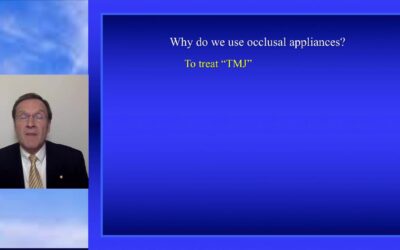Duration: 1 hour, 36 minutes, 23 seconds
Author: Dr. Brian P. LeSage
Restoration of Endodontically Treated Teeth
Introduction
Endodontically treated teeth are compromised and require careful restoration. The success of the final restoration depends on the extent of compromise in the tooth. In this article, we will explore the various aspects of restoring endodontically treated teeth, including the appropriate posts and cores, their length, and cementation. Additionally, we will discuss examples of acceptable and unacceptable restorations.
1. Understanding the Compromise in Endodontically Treated Teeth
Endodontically treated teeth often suffer from structural damage due to decay, trauma, or the root canal procedures themselves. Before restoring such teeth, it is crucial to comprehend the type and degree of compromise to determine the appropriate treatment plan.
1.1 Decay and Fracture
Decay and fracture are common issues in endodontically treated teeth. Proper evaluation and diagnosis are essential to identify the extent of these problems and determine the restoration options for the tooth.
1.2 Remaining Tooth Structure
The remaining tooth structure plays a vital role in deciding the restoration technique. Factors such as the amount of sound tooth structure, presence of sufficient coronal tooth walls, and the condition of the root influences the restoration approach.
2. Choosing the Right Posts and Cores
Once the extent of compromise is determined, selecting the appropriate posts and cores becomes crucial in ensuring the success of the restoration.
2.1 Types of Posts
There are various types of posts available for restoring endodontically treated teeth. These include prefabricated metal posts, fiber posts, and custom-made cast posts. Each type has its advantages and considerations, which will be discussed in detail.
2.2 Characteristic of an Ideal Core
An ideal core should provide sufficient retention, resistance, and stability to support the final restoration. This section will outline the qualities of an ideal core and discuss different materials commonly used in core build-ups.
3. Determining the Length of Posts and Cores
The length of posts and cores significantly influences the success and longevity of the restoration. It is essential to understand the factors and guidelines for determining the appropriate length.
3.1 Assessment of Remaining Tooth Structure
Proper evaluation of the remaining tooth structure aids in determining the optimal length of posts and cores. Factors such as the location and condition of the remaining tooth structure play a crucial role in this decision-making process.
3.2 Guidelines for Post Length
This section will outline the general guidelines for post length based on the amount of remaining coronal tooth structure and the anatomical considerations of the tooth being restored.
4. Cementation Techniques for Endodontically Treated Teeth
Proper cementation is crucial to ensure the stability and longevity of the restoration. This section will discuss various cementation techniques and considerations specific to endodontically treated teeth.
4.1 Cementation Materials
Several cementation materials are available when restoring endodontically treated teeth. Each material has its advantages, and the decision depends on factors such as esthetics, retention, and the type of restoration being placed.
4.2 Step-by-step Cementation Technique
A detailed description of the cementation technique for posts and cores will be provided, including the necessary isolation methods, preparation steps, and cementation protocols.
5. Examples of Acceptable and Unacceptable Restorations
Visual examples will be shown and discussed to help understand the difference between acceptable and unacceptable restorations. These examples will provide practical insights into the key principles discussed throughout the article.
Conclusion
Restoring endodontically treated teeth requires careful consideration of the extent of compromise and the selection of appropriate posts, cores, and cementation techniques. By following the guidelines outlined in this article, dental professionals can achieve successful and long-lasting restorations for their patients.
FAQs
1. Can endodontically treated teeth be restored with a simple filling?
2. What are the advantages of fiber posts over metal posts?
3. How long can a well-restored endodontically treated tooth last?
4. Are there any special precautions while cementing posts and cores?
5. What are the consequences of leaving compromised endodontically treated teeth unrestored?





Add comment